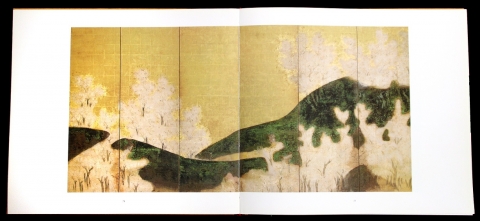Masterpieces of Japanese Screen Painting
Masterpieces of Japanese screen painting : the American collections
The late-16th century was the golden age of Japanese screen painting, both literally and figuratively. The Momoyama period (1573-1615) was also an age of monumental architecture, with feudal lords building forts and castles of a size unprecedented in Japan. The great masters of the art of screen painting who were called upon to decorate the interiors of these large buildings filled them with screens of bold and innovative aesthetics, some with gold leaf covering their entire surfaces. Japan had a well-established tradition of incorporating gold leaf into art and decorative work. The use of paper-thin sheets of gold leaf started in the 14th century and continued to be seen in screens made during the Edo period (1615-1868). A number of these beautiful golden screens—some of which once graced the halls of Japanese castles, forts, and temples—are now in American museum collections and can be seen in this catalog by Miyako Murase. Waves at Matsushima, an Edo period screen painted by the artist Sōtatsu and shown in this book, can be found in the collection of the Freer Gallery of Art, Smithsonian Institution (06.231-06.232).
Discover more about this book in our Catalog.
Adoption Type: Build and Access the Collection

